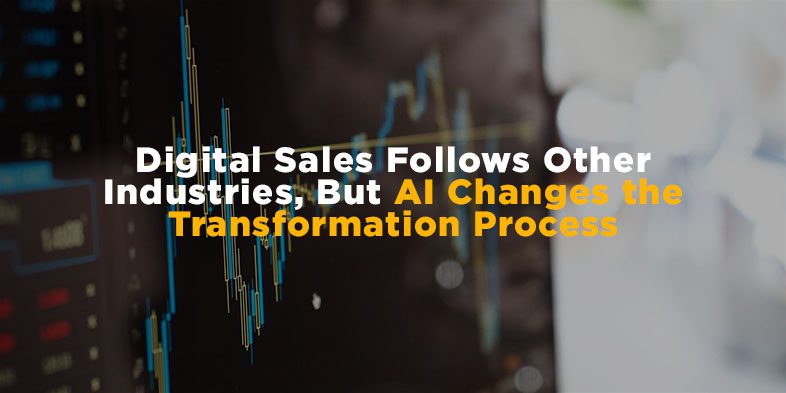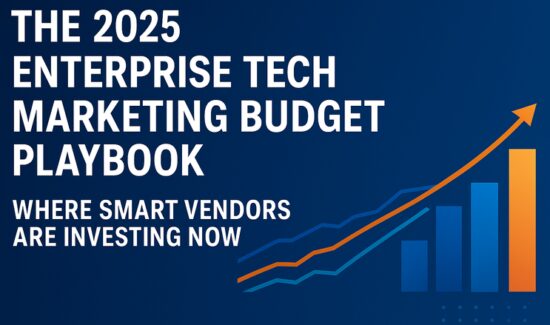Digital Sales Follows Other Industries, But AI Changes the Transformation Process

As part of Solutions Review’s Contributed Content Series—a collection of contributed articles written by our enterprise tech thought leader community—Ellie Fields, the Chief Product & Engineering Officer at Salesloft, explores how AI is changing how sales embrace digital transformation.
 The sales industry is in the middle of a “Digital Transformation”—moving offline processes online. This shift has been underway for decades, and today’s hottest topic—AI Transformation—is only possible because of all the digital data these teams have. That said, sales are relatively new to this digital world, and until the pandemic, most selling still happened the old-fashioned way, with sellers grumpily typing a few updates into their CRM before leaving for the weekend.
The sales industry is in the middle of a “Digital Transformation”—moving offline processes online. This shift has been underway for decades, and today’s hottest topic—AI Transformation—is only possible because of all the digital data these teams have. That said, sales are relatively new to this digital world, and until the pandemic, most selling still happened the old-fashioned way, with sellers grumpily typing a few updates into their CRM before leaving for the weekend.
So, what can sales teams learn from industries farther ahead in this digital-ness? And now that AI is part of the mix, what will be different?
Digitization Leads to Understanding Systems More Deeply
For most companies, the most common benefits cited by going digital are efficiency and productivity. For example, marketing went from a creative Wild West to Digital Marketing, where creativity is still important but can be attached to results. Meanwhile, software engineering evolved from the land of on-premise machines to the cloud and distributed systems, and, as a result, Observability became important. It’s hard to remember a world when paper was the primary medium we used to communicate, transact, and reflect.
But the most profound impact of these transformations has been the ability to understand a system more deeply. In Monitoring and Observability, Cindy Sridharan writes, “Monitoring is best suited to report the overall health of systems… Observability… aims to provide highly granular insights into the behavior of systems along with rich context.” It’s the context that is so valuable here. It will help engineers understand the system to the point that they can launch ads on Netflix in three months, adding a significant component to a massively distributed system with minimal disruption.
An Example From Marketing
If the engineering blogs are too geeky for you, here’s an example from Digital Marketing. A marketer could observe that one ad style works better with a target audience than another. This can inform the marketer to lean more into the messaging and creative style of the well-performing ad. At a deeper level, the marketer could learn something about buying behavior: perhaps the better ad touches on economic uncertainty, and buyers respond more because they see volatility in their businesses.
This insight leads us to understand the buyer not as a static system but as something that is changing and evolving, and it lets marketers be in tune with that change. This is deeper than a simple action-to-outcome chain—it provides some context about the underlying system.
Note that any insight should be connected to an outcome called a real insight. Simply aggregating analytics is not an insight—that a company placed 15 percent more ads in February than in January is an aggregation of data, not an insight. Actionable insights are preferred for anyone who acts, so they should be specific.
Any system we might want to use digital data to learn about will naturally have some shared characteristics and some unique ones. While good digital marketing has commonalities across companies and industries, each product and buyer differs. Likewise, Netflix may look similar to other online streaming providers (having recommendation systems, user log-in, and billing, and is perhaps even built on the same cloud platform of AWS), but it is not exactly like them.
In sales, we know that different industries have similarities and idiosyncrasies. Selling airplanes is not like selling office supplies, though both are B2B sales of manufactured goods and, in both cases, sellers must ensure they have the inventory to fulfill demand.
How AI Changes Things
Generative AI is a step-function accelerator that enhances the ability of sales teams to get insights from all the digital data in their conversations with buyers. Sellers do a lot of talking. This isn’t a knock on sellers; it’s a core part of the job. They also listen a lot, at least the good ones do. The sheer volume of words spoken during a typical sales opportunity is staggering, especially when both buying and selling groups are involved.
Techniques like summarization of conversations can help sellers review and synthesize what their buyers are saying to understand their opportunities and buyers better. The new generation of LLMs allows sellers to summarize, sift through, and otherwise use all that unstructured data. It lets managers quickly find and focus on problem areas. Auto-generated action items can save hours over a week and make actions like follow-up faster, helping to progress deals.




















